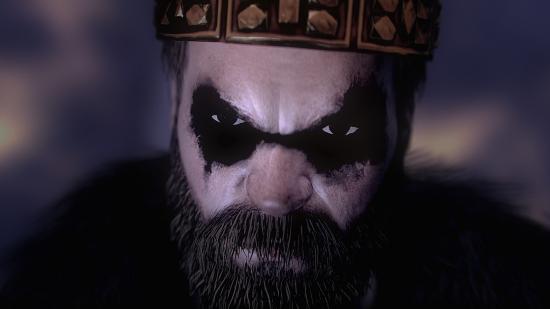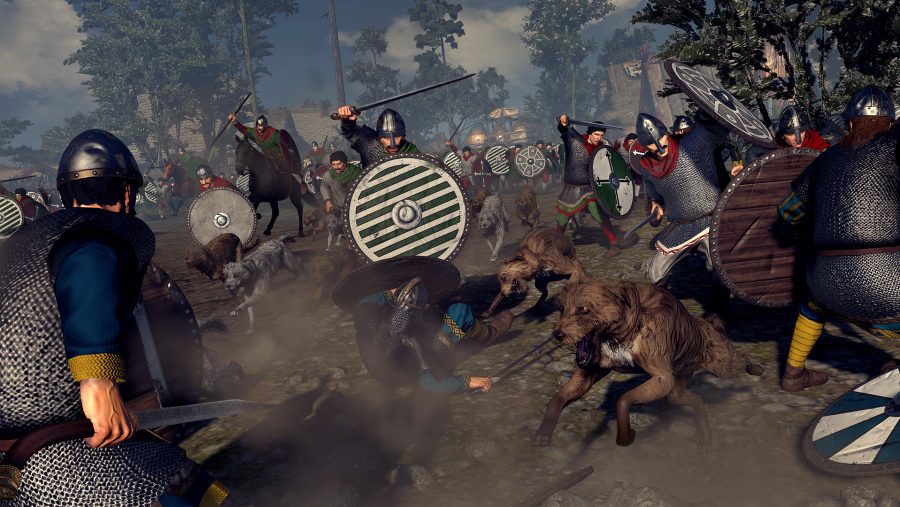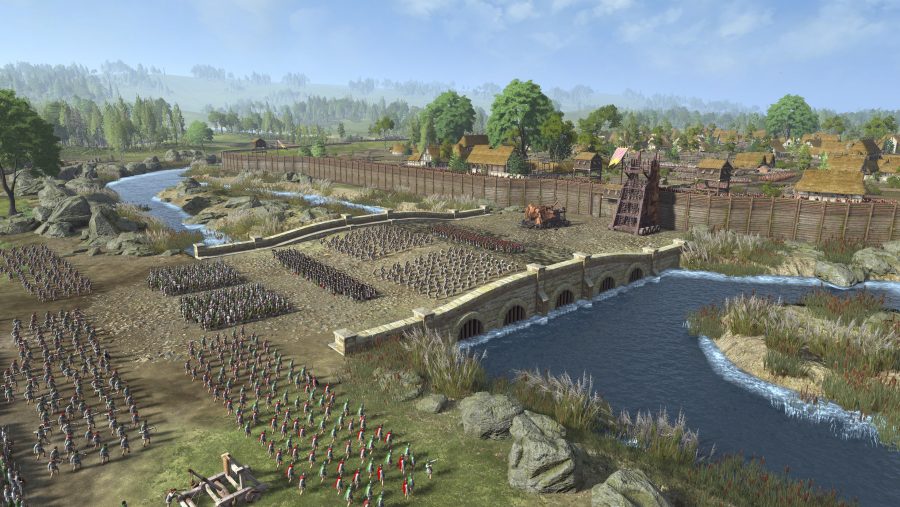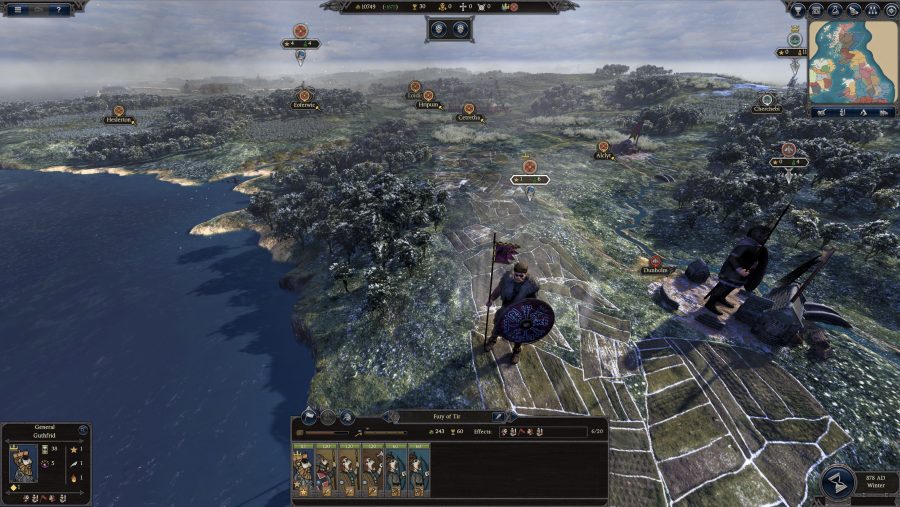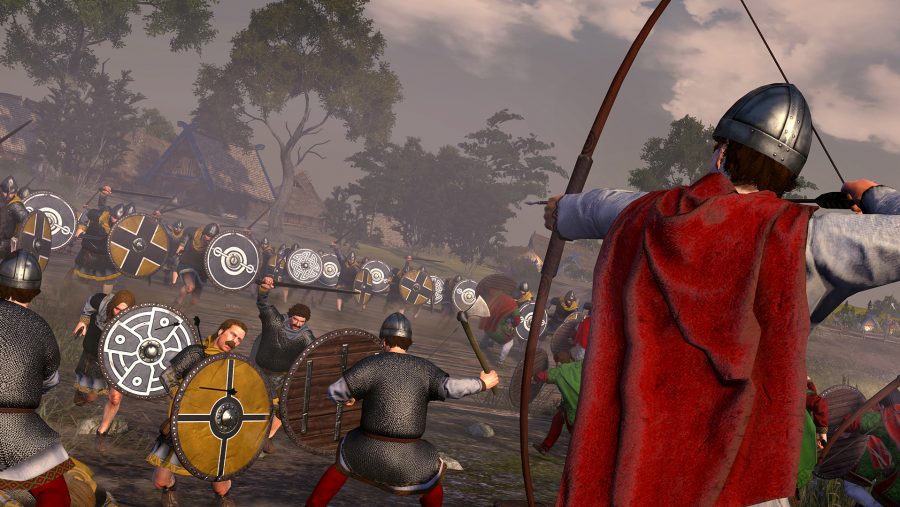Our Verdict
The fact that I can’t wait to go back and play through the game again with each faction gives you an indication of just how moreish Thrones of Britannia is. Plus, I need to do right by Alfred and ensure that this time his destiny ends with him securing England’s future rather than face down in the dirt of Kent.
Poised as we are on the brink of Brexit, it seems cannily appropriate for Creative Assembly to release a game all about the era in which England became a nation. Starting off in 878 AD, Thrones of Britannia sees Alfred the Great on a quest to push back against a Viking invasion from the North East, with the aim of unifying the land under the banner of the Anglo-Saxons. Admittedly, my clumsy first attempt at controlling the great monarch saw him perish within two years, Wessex fall into civil war, and my armies starve, but the point still stands.
Alfred’s story is just one of many you can potentially screw up: the game gives you the option to play as ten factions, each with different alliances, strengths, and objectives. For instance, you could opt to play as the Welsh king Anaraut on a mission to unite Wales, the Irish king Flann on a quest to become High King of Ireland, or the Scottish king Aed as he attempts to repel rival clans and resist the Viking invaders. And if you’re not feeling particularly patriotic you could even play as the Viking invaders themselves, seeking to subjugate Britain under the sharp end of an axe.
Gameplay follows the usual Total War template, with two different modes: a map view in which you can move your armies, construct buildings, research technology, and engage in diplomacy; and a battle view in which you conduct your army during a fight. As ever, the scale and complexity of the skirmishes is impressive, as you carefully manoeuvre up to 20 different troop units into strategic positions, attempting to outflank the enemy or slam a humiliating cavalry charge from the rear. The ability to zoom seamlessly from a bird’s eye view right down to the eye level of individual fighters still amazes even after all these years.
Laying siege to a provincial capital also makes a refreshing change from the regular battles – catapults are a rare, late-game unit, so sieges are now protracted, bloody affairs defined by rams and siege towers. A great variety of settlement maps, some of which are based directly on their historical layouts, also ensures that no two such undertakings feel quite the same.
Battles are also slower than in recent Total Wars – certainly Warhammer – as Creative Assembly aim to simulate the tactics of the day: if infantry have shields, they’ll default to fighting in a shieldwall formation, and can protect against missiles with a shield castle. This makes them very resilient as frontline infantry go, especially since heavy cavalry are rare, leaving two-handed infantry as most armies’ typical shock troops. Most battles are about keeping those shock troops alive long enough to bring them to bear (lacking shields, they’re much more vulnerable to missile fire), or trying to win an advantage on the flanks with skirmishers. It’s a tense, drawn-out business.
Impressive as it all is, I found that I rarely used the battle view in the course of play. As in previous entries to the series, every time you engage with an enemy army, there’s an option to have the AI instantly take care of the battle for you – and as long as you outnumber the enemy, you’re pretty much guaranteed a welcome outcome. The only times I stepped in to play a battle manually were occasions when I was attacked by an army of equal or greater force, in the hope that a few cunning tactics might tip the battle in my favour. In the campaign at least, battles are more of a side show – the meat of the game is in the map and the menus.
Luckily the map itself is a thing of beauty, alive with rippling grass, criss-crossing caravans, and Viking longships harassing the coast. It’s jarring to return from Warhammer to the ageing Attila engine, true, but Creative Assembly have made it look pretty damn good regardless. And if you’re worried that Thrones of Britannia might lack the scope of previous Total War games such as Rome or Attila, which took in whole continents, then be assured that it’s sufficiently huge.
In fact, the British Isles in this game is 23 times the size of the British Isles featured in Total War: Attila, and for UK players there’s the added thrill of battling through humble and familiar towns like Saint Albans and Dunbar. Although, in a lovely touch, all of the places have been given their historical names, so London is Lunden, Manchester is Mameceaster and Leeds is Loidis. The cutscenes also have a suitably historical feel, rendered like pages straight out of the Anglo-Saxon Chronicle.
I particularly liked the factions menu, with its illustrated manuscript-style family portraits and detailed information about your lineage and retinue. It’s particularly useful as a place to find out who may be about to stab you in the back and make a grab for the throne – any nobles who end up with more influence than the regent need to be taken down a peg or two, and there are several fun ‘intrigue’ options which range from bad-mouthing them to full-on assassination. And it’s not just nobles you have to keep an eye on: your conquered territories are liable to be a bit rowdy and could rise up in civil war at any moment (as my initial Alfred found out to his cost). Luckily, just like in real life, you can quieten them down by building taverns and churches.
The diplomacy options are pretty good fun, too. There’s a remarkable sense of satisfaction to be gained from building alliances and stoking resentment, teaming up with certain factions against others and eventually dominating smaller groups to the point where you can turn them into vassal states. In fact the whole thing is just enormous fun – I found whole hours just disappeared as I pored over the map and watched my empire grow, all soundtracked by some genuinely lovely period music. I’d usually play a strategy game like this with my own soundtrack blasting from the speakers, but those haunting pipes and drums were just too good to turn off.
It helps that the game regularly provides missions – these usually involve capturing certain territories or towns, and offer a sense of direction. Having said that, you also have constant goals for a Short Victory (if you want a shorter campaign) and Long Victory, either of which can be achieved three ways: through gaining fame, conquering settlements, or controlling provinces. And if you achieve a Long Victory, there’s always the Ultimate Victory, which sees you fighting off a huge foreign invasion.
The various factions really give a different feel to each playthrough, so there’s huge scope for replayability here. The Gwined faction is well-poised for a fame victory thanks to its unique Bard building chain, whereas the Viking Sea Kings get to go on expeditions to faraway lands and are perfectly equipped for terror-inducing raids on coastal towns.
